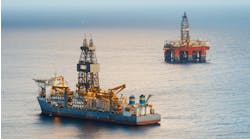Offshore staff
BRYAN-COLLEGE STATION, Texas – The Texas A&M Engineering Experiment Station (TEES) will collaborate with energy-sector stakeholders, several national labs and universities in 10 states as the manager of a new Ocean Energy Safety Institute (OESI).
The goals of the OESI include safer workplaces, improved environmental stewardship, and greater US energy security.
Through advances in technology, monitoring equipment and workforce training, the OESI will work to mitigate environmental and safety risks for both conventional and renewable energy technologies and prevent geohazards, work-process incidents, and offshore oil spills.
The consortium is organized under an agreement announced in May between TEES and the US Department of the Interior’s Bureau of Safety and Environmental Enforcement (BSEE) and the US Department of Energy. The agreement calls for up to $40 million from the federal government over five years, as well as about $12 million in investments from consortium members.
A smaller-scale OESI had been operated until recently by TEES and two other Texas universities. Now, the OESI includes 16 universities in 10 states, including Texas A&M University and Prairie View A&M University. It also involves national labs and more than 20 stakeholders representing conventional and renewable energy – including offshore wind and marine and hydrokinetic energy – from every offshore energy producing region.
The universities involved in the OESI represent Massachusetts, Maryland, Virginia, Florida, Louisiana, Texas, Oklahoma, California, Washington, and Alaska.
John Pappas, TEES director of center operations and adjunct faculty member in the Department of Ocean Engineering at Texas A&M, is the program manager for the OESI project. He called the new consortium a “game-changer.”
“We look forward to being part of the next generation of safety and environmental protection technologies for offshore energy production,” Pappas said. “Our team is extraordinarily diverse, creative and talented. It will offer new solutions and new ways of thinking.”
TEES will be responsible for developing a road map of projects in consultation with consortium members. Once approved by federal officials, the road map becomes a guide for individual projects with yearly objectives.
While BSEE and the Department of Energy will provide expertise, direction and oversight through a Joint Steering Committee (JSC), the OESI will operate independently. The JSC will include experts in oil and gas, offshore wind and marine and hydrokinetic energy.
06/03/2021



